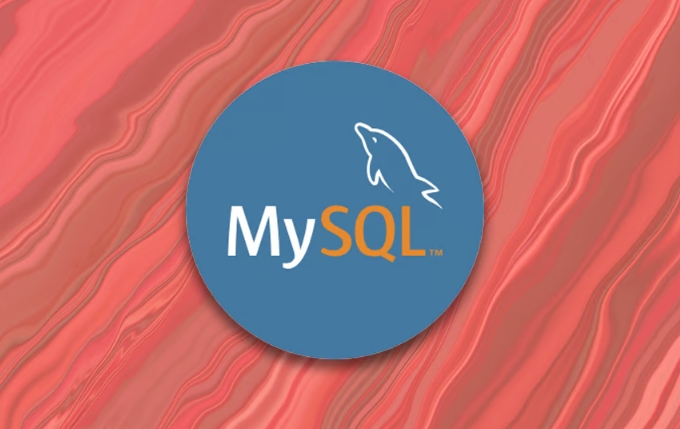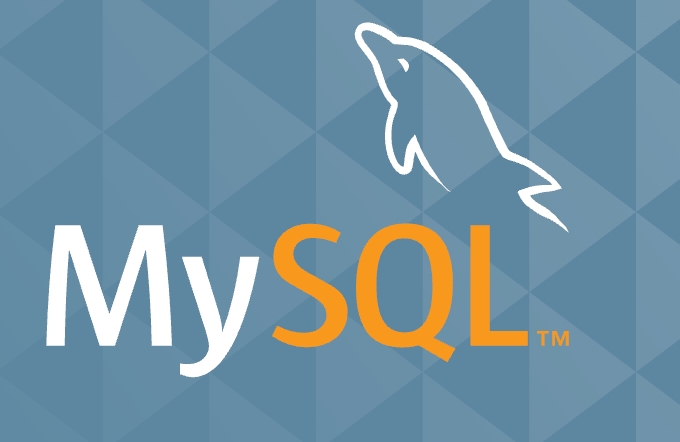There are five key points to note when migrating a MySQL database to AWS RDS Aurora. 1. Evaluate the current database environment, including version compatibility, data size, and dependencies; 2. Select the appropriate migration method, such as mysqldump, physical backup recovery, or AWS DMS; 3. Configure the VPC, security group, parameter group, and option group of Aurora instance; 4. Perform data consistency checks, performance tests, and connection tests after migration; 5. Tune according to performance performance, such as adding read replicas or using cache tiers. The entire process is recommended to practice in the test environment to ensure smooth migration.

Migrating MySQL databases to AWS RDS Aurora is the choice for many businesses or developers when scaling and optimizing database architectures. Aurora provides high performance, high availability and MySQL compatibility to make the migration process relatively smooth. But there are still some key points to pay attention to in actual operation.

1. Evaluate the current database environment
Before starting the migration, you must first understand your current database structure and usage:
- Version Compatibility : Confirm whether your current MySQL version is compatible with the target Aurora. Aurora supports multiple MySQL-compatible versions, such as 5.6, 5.7, and 8.0.
- Data volume size : If the data volume is more than a few hundred GB, you may want to consider using AWS DMS (Database Migration Service) instead of simple mysqldump.
- Dependency objects : Check whether stored procedures, triggers, events, views, etc. are supported in Aurora, and some syntaxes may need to be adjusted.
2. Choose the right migration method
Depending on your data volume and business needs, you can choose the following common methods:

mysqldump import
Suitable for small and medium-sized databases (within tens of GB). Usemysqldumpto export SQL files, and then import them into Aurora instance through themysqlcommand. Pay attention to setting the appropriate character set and parameters, such as--default-character-set=utf8mb4.-
Physical backup recovery (such as Percona XtraBackup)
Suitable for large databases that require minimum downtime. First do a full backup locally, then restore to Aurora's EC2 instance, and then complete incremental synchronization through logical copy or DMS.
AWS DMS (Database Migration Service)
Suitable for non-stop migration scenarios and supports continuous replication. You can first do a full migration, and then continue to synchronize the change of data (CDC). Pay attention to the permissions and network settings of the source database.
3. Configure Aurora instances and networks
There are several key points that cannot be ignored when creating an Aurora instance:
- VPC and subnet groups : Make sure that the Aurora instance is deployed in the appropriate VPC and configure the subnet groups. If your application is also on AWS, it is best to deploy it in the same VPC to reduce latency.
- Security Group Settings : Open the 3306 port of Aurora instance to your application server or springboard IP.
- Parameter group and option group : Adjust parameter group according to your database configuration, such as the maximum number of connections, character sets, etc. Aurora default parameters may not exactly meet your needs.
4. Verification and optimization after migration
After the migration is completed, don’t rush to cut traffic, and do a full verification first:
- Data consistency check : Compare whether the table structure, index and number of records of the source library and the target library are consistent.
- Performance Test : Run some common SQL queries to observe response time and resource usage.
- Connection testing : Make sure your application can connect to Aurora instances normally, especially connection pool configuration, SSL settings, etc.
If you find a performance degradation, you can consider:
- Adjust the number of read replicas for Aurora
- Use a cache layer (such as Redis)
- Optimize slow queries
Basically that's it. Although the entire process is not complicated, the details are easy to ignore, such as permission configuration, character set issues, connection timeout settings, etc. It is recommended to practice it in the test environment before going online for official migration.
The above is the detailed content of MySQL Database Migration to AWS RDS Aurora. For more information, please follow other related articles on the PHP Chinese website!

Hot AI Tools

Undress AI Tool
Undress images for free

Undresser.AI Undress
AI-powered app for creating realistic nude photos

AI Clothes Remover
Online AI tool for removing clothes from photos.

Clothoff.io
AI clothes remover

Video Face Swap
Swap faces in any video effortlessly with our completely free AI face swap tool!

Hot Article

Hot Tools

Notepad++7.3.1
Easy-to-use and free code editor

SublimeText3 Chinese version
Chinese version, very easy to use

Zend Studio 13.0.1
Powerful PHP integrated development environment

Dreamweaver CS6
Visual web development tools

SublimeText3 Mac version
God-level code editing software (SublimeText3)
 Handling NULL Values in MySQL Columns and Queries
Jul 05, 2025 am 02:46 AM
Handling NULL Values in MySQL Columns and Queries
Jul 05, 2025 am 02:46 AM
When handling NULL values ??in MySQL, please note: 1. When designing the table, the key fields are set to NOTNULL, and optional fields are allowed NULL; 2. ISNULL or ISNOTNULL must be used with = or !=; 3. IFNULL or COALESCE functions can be used to replace the display default values; 4. Be cautious when using NULL values ??directly when inserting or updating, and pay attention to the data source and ORM framework processing methods. NULL represents an unknown value and does not equal any value, including itself. Therefore, be careful when querying, counting, and connecting tables to avoid missing data or logical errors. Rational use of functions and constraints can effectively reduce interference caused by NULL.
 Performing logical backups using mysqldump in MySQL
Jul 06, 2025 am 02:55 AM
Performing logical backups using mysqldump in MySQL
Jul 06, 2025 am 02:55 AM
mysqldump is a common tool for performing logical backups of MySQL databases. It generates SQL files containing CREATE and INSERT statements to rebuild the database. 1. It does not back up the original file, but converts the database structure and content into portable SQL commands; 2. It is suitable for small databases or selective recovery, and is not suitable for fast recovery of TB-level data; 3. Common options include --single-transaction, --databases, --all-databases, --routines, etc.; 4. Use mysql command to import during recovery, and can turn off foreign key checks to improve speed; 5. It is recommended to test backup regularly, use compression, and automatic adjustment.
 Calculating Database and Table Sizes in MySQL
Jul 06, 2025 am 02:41 AM
Calculating Database and Table Sizes in MySQL
Jul 06, 2025 am 02:41 AM
To view the size of the MySQL database and table, you can query the information_schema directly or use the command line tool. 1. Check the entire database size: Execute the SQL statement SELECTtable_schemaAS'Database',SUM(data_length index_length)/1024/1024AS'Size(MB)'FROMinformation_schema.tablesGROUPBYtable_schema; you can get the total size of all databases, or add WHERE conditions to limit the specific database; 2. Check the single table size: use SELECTta
 Handling character sets and collations issues in MySQL
Jul 08, 2025 am 02:51 AM
Handling character sets and collations issues in MySQL
Jul 08, 2025 am 02:51 AM
Character set and sorting rules issues are common when cross-platform migration or multi-person development, resulting in garbled code or inconsistent query. There are three core solutions: First, check and unify the character set of database, table, and fields to utf8mb4, view through SHOWCREATEDATABASE/TABLE, and modify it with ALTER statement; second, specify the utf8mb4 character set when the client connects, and set it in connection parameters or execute SETNAMES; third, select the sorting rules reasonably, and recommend using utf8mb4_unicode_ci to ensure the accuracy of comparison and sorting, and specify or modify it through ALTER when building the library and table.
 Aggregating data with GROUP BY and HAVING clauses in MySQL
Jul 05, 2025 am 02:42 AM
Aggregating data with GROUP BY and HAVING clauses in MySQL
Jul 05, 2025 am 02:42 AM
GROUPBY is used to group data by field and perform aggregation operations, and HAVING is used to filter the results after grouping. For example, using GROUPBYcustomer_id can calculate the total consumption amount of each customer; using HAVING can filter out customers with a total consumption of more than 1,000. The non-aggregated fields after SELECT must appear in GROUPBY, and HAVING can be conditionally filtered using an alias or original expressions. Common techniques include counting the number of each group, grouping multiple fields, and filtering with multiple conditions.
 Implementing Transactions and Understanding ACID Properties in MySQL
Jul 08, 2025 am 02:50 AM
Implementing Transactions and Understanding ACID Properties in MySQL
Jul 08, 2025 am 02:50 AM
MySQL supports transaction processing, and uses the InnoDB storage engine to ensure data consistency and integrity. 1. Transactions are a set of SQL operations, either all succeed or all fail to roll back; 2. ACID attributes include atomicity, consistency, isolation and persistence; 3. The statements that manually control transactions are STARTTRANSACTION, COMMIT and ROLLBACK; 4. The four isolation levels include read not committed, read submitted, repeatable read and serialization; 5. Use transactions correctly to avoid long-term operation, turn off automatic commits, and reasonably handle locks and exceptions. Through these mechanisms, MySQL can achieve high reliability and concurrent control.
 Connecting to MySQL Database Using the Command Line Client
Jul 07, 2025 am 01:50 AM
Connecting to MySQL Database Using the Command Line Client
Jul 07, 2025 am 01:50 AM
The most direct way to connect to MySQL database is to use the command line client. First enter the mysql-u username -p and enter the password correctly to enter the interactive interface; if you connect to the remote database, you need to add the -h parameter to specify the host address. Secondly, you can directly switch to a specific database or execute SQL files when logging in, such as mysql-u username-p database name or mysql-u username-p database name
 Managing Character Sets and Collations in MySQL
Jul 07, 2025 am 01:41 AM
Managing Character Sets and Collations in MySQL
Jul 07, 2025 am 01:41 AM
The setting of character sets and collation rules in MySQL is crucial, affecting data storage, query efficiency and consistency. First, the character set determines the storable character range, such as utf8mb4 supports Chinese and emojis; the sorting rules control the character comparison method, such as utf8mb4_unicode_ci is case-sensitive, and utf8mb4_bin is binary comparison. Secondly, the character set can be set at multiple levels of server, database, table, and column. It is recommended to use utf8mb4 and utf8mb4_unicode_ci in a unified manner to avoid conflicts. Furthermore, the garbled code problem is often caused by inconsistent character sets of connections, storage or program terminals, and needs to be checked layer by layer and set uniformly. In addition, character sets should be specified when exporting and importing to prevent conversion errors







